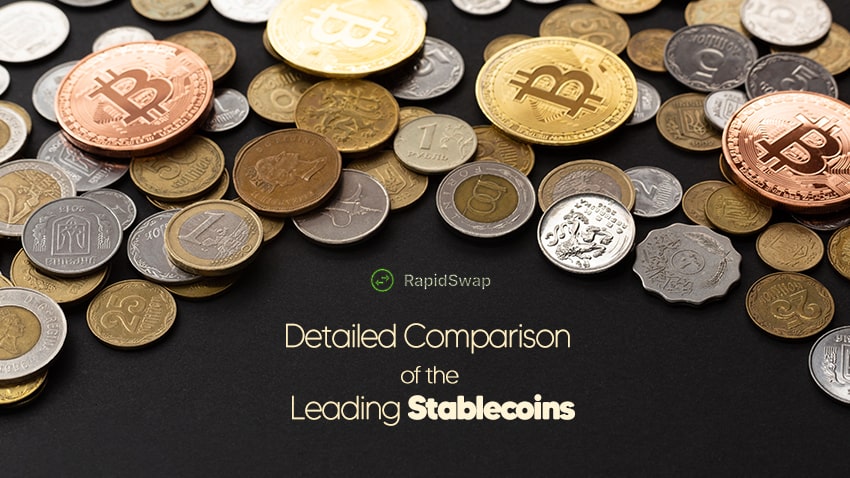Cryptocurrencies are often synonymous with volatility, which can make them difficult to use as reliable stores of value or mediums of exchange. To address this challenge, stablecoins were introduced, offering a digital currency solution that is pegged to stable assets such as fiat currencies, precious metals, or commodities. Among the most widely recognized stablecoins are USD Coin (USDC) and Tether (USDT). These two digital assets have become crucial components of the cryptocurrency ecosystem, providing a way to stabilize value in a notoriously unstable market. But what sets them apart, and how do they compare?
Understanding Stablecoins and Their Purpose
Stablecoins are designed to combine the benefits of digital currencies with the stability of traditional financial assets. Unlike Bitcoin or Ethereum, which can experience significant price swings in short periods, stablecoins aim to maintain a consistent value. This is achieved by pegging the stablecoin to a reserve of assets, most commonly fiat currencies like the U.S. dollar. This peg is meant to ensure that each unit of the stablecoin is backed by a corresponding amount of the underlying asset, thus providing confidence in its value.
What Are Fiat-Backed Stablecoins?
Fiat-backed stablecoins are the most prevalent type of stablecoin in the market today. These digital assets are backed by reserves of fiat currency, typically held in a bank account. The fundamental principle is that the total supply of the stablecoin in circulation is fully collateralized by an equivalent amount of the fiat currency reserve. For instance, if a stablecoin is pegged to the U.S. dollar, each token should be backed by one U.S. dollar held in reserve. This one-to-one backing is intended to provide stability, ensuring that the stablecoin’s value remains close to its peg.
USDC: The Reliable Contender
USD Coin (USDC) is a fiat-backed stablecoin that is pegged to the U.S. dollar. It was launched in 2018 by Circle and Coinbase under the CENTRE consortium. USDC is known for its transparency and regulatory compliance, which are major factors in its widespread adoption.
- Transparency and Compliance: USDC is fully audited by independent accounting firms, with monthly attestations confirming that the reserve assets match the number of USDC tokens in circulation. This commitment to transparency helps build trust among users, particularly institutions and regulated entities.
- Use Cases: USDC is often used for trading, lending, and remittances. Its stability and regulatory backing make it a preferred choice for those who need a reliable digital dollar equivalent in the crypto space.
- Regulatory Alignment: The CENTRE consortium behind USDC ensures that the stablecoin complies with U.S. regulations, which has positioned USDC as a safe and secure option for investors and businesses.
USDT: The Market Dominator
Tether (USDT), launched in 2014, is the most popular and widely used stablecoin in the world. It is also pegged to the U.S. dollar, and its value is maintained by holding equivalent reserves of fiat currency.
- Market Dominance: USDT is the most traded stablecoin by volume and has the largest market capitalization among stablecoins. It is frequently used as a liquidity pair on exchanges and is essential for trading and arbitrage activities.
- Liquidity: Tether’s vast market penetration means it is available on almost every cryptocurrency exchange, providing unparalleled liquidity for traders.
- Controversy and Trust Issues: Despite its dominance, Tether has faced scrutiny over the years regarding its reserve transparency. Critics have questioned whether Tether holds sufficient reserves to back the circulating supply fully. Although Tether has made efforts to improve transparency, including publishing periodic attestations, some users remain cautious.
Key Differences Between USDC and USDT
- Transparency and Auditing: USDC is known for its rigorous transparency practices, with regular audits and detailed reports on its reserves. USDT, while it has improved its reporting practices, has historically been less transparent, which has led to ongoing concerns about the sufficiency of its reserves.
- Regulatory Compliance: USDC is heavily focused on regulatory compliance, making it more attractive to institutional investors and businesses that prioritize adherence to legal standards. USDT, on the other hand, has a more global and less regulated appeal, which can be both a strength and a weakness.
- Market Adoption: USDT leads the market in terms of adoption and trading volume, making it the go-to stablecoin for many traders. USDC, while growing rapidly, still lags behind USDT in terms of overall market presence but is favored in contexts where regulatory compliance and transparency are prioritized.
- Risk and Trust: For users who prioritize transparency and regulatory oversight, USDC may be the better choice. For those who need the highest liquidity and are willing to accept the associated risks, USDT remains the top choice.
Which Stablecoin Should You Choose?
The decision between USDC and USDT depends on your specific needs and priorities as a cryptocurrency user. If you value transparency, regulatory compliance, and institutional backing, USDC is likely the better option. Its rigorous auditing practices and adherence to regulatory standards make it a safer choice for those concerned with security and trust.
On the other hand, if you prioritize liquidity and widespread acceptance in the cryptocurrency market, USDT may be more suitable. Despite its controversies, Tether’s dominant position in the market means it offers unmatched liquidity and trading opportunities.
USDC and USDT are both leading stablecoins that serve crucial roles in the cryptocurrency ecosystem. Each has its strengths and potential drawbacks, and the best choice will depend on your individual needs. Whether you prioritize transparency and regulation (USDC) or market liquidity and adoption (USDT), understanding the key differences between these stablecoins will help you make an informed decision in your crypto trading and investment strategies.

